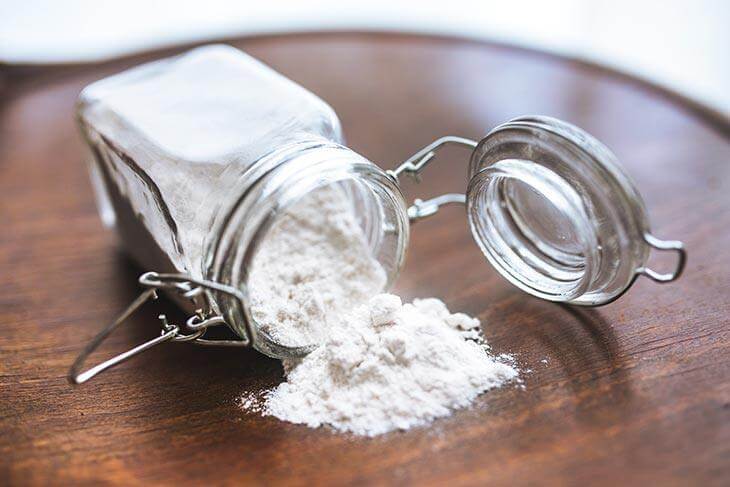Flour is one of the main ingredients for breads and other baked goods. If you’re a serious baker, there is a big chance that you have encountered more than one type of flour.
You might have also found yourself wondering if the flour in your pantry has gone bad or not. I know from personal experience that flour does spoil. It’s very important to know your flour’s shelf life so you don’t accidentally use a bad batch when baking pastries.
If you find yourself wondering how long does flour last, then this article may help you with that. I will tell you what the usual shelf life of different types of flours are. Then I will give you quick tips on how to store flour properly so you can make it last as long as possible.
Can Flour Go Bad?

Like most ingredients, flour can go bad after a certain period of time. The expiration date may vary, depending on the type of flour you have in your kitchen.
Regular flour usually lasts for 6 to 8 months past its manufacture date. The same goes for rice flour, corn meal flour, and potato flour. Whole wheat flour, on the other hand, contains more oil compared to other types of flour, so it usually only lasts for 4 to 6 months after its printed date.
These time estimates apply to both opened and unopened flour bags. However, you should note that these timelines only work if you store your flour properly. If you don’t, moisture may seep into the package and cause your flour to spoil quicker that it normally would.
How To Test If Your Flour is Still Good or Not

Contrary to what you may believe, it isn’t really hard to check if your flour is still good or if it has gone bad. Like in most foods, you can look for telltale signs to determine if you can still use the flour for your next baked recipe.
Here are some of the signs of spoilage that you can keep an eye out for:
Presence of flour bugs
Also called weevils, flour bugs may find their way into poorly packaged flour bags and lay eggs in the ingredient. If you notice that your flour has tiny creeping crawlies in it, I strongly advise you to throw it out immediately.
While some claim that you can freeze your flour for 2 days to kill the flour bugs, there’s really no way of confirming this. There’s also always the chance that the eggs may still hatch even after you have gotten rid of the adult bugs.
After you get rid of the flour with weevils, I recommend cleaning your pantry thoroughly, in case some of the bugs have moved to your other kitchen ingredients.
Rancid smell
This may not work for other types of flour, but you can usually tell that your wheat flour is spoiled when it has developed a sour smell. This happens because the oil in the flour tends to oxidize after a period of time.
Moldy appearance.
If you do not seal the flour’s container properly, moisture may get in the bag and into the flour. Once this happens, the flour may clump together and may become a breeding ground for molds. If this happens, you will have no choice but to throw your flour away.
Tips on Storing Flour
How you store your flour may greatly affect how long it will last in your pantry. As a general rule, you should store flour in a cool, dry area away from direct sunlight or moisture. This may help extend the shelf life of your flour to up to a year.
Once you open the flour’s packaging, I recommend transferring the flour in an airtight container to keep moisture and the odor of other foods out. You can also place the flour bag in a zip lock bag and squeeze out the excess air.
Since whole wheat flour tends to expire quicker than other types of flour, you may want to consider storing it in the refrigerator or freezer. This will help slow down the oxidization process of the oil, which in turn will keep your flour good much longer.
Executive chef Greg De Michel of Hudson Restaurant gives a very quick and easy instructions on how to store baking flour. See the video here:
This tutorial needs only two items—a plastic wrap and a storage container—and has three super simple steps:
Step 1: Get a plastic wrap big enough to cover the opening of your container.
Step 2: Wrap the plastic wrap tightly around the container.
Step 3: Find a dark storage place, away from direct sunlight.
Of course, if your container already has a tight-fitting lid, you can simply use that instead of using the plastic wrap. The important thing is to keep moisture and foreign odors away.
Conclusion
Just because flour doesn’t go bad as quickly as other ingredients or food items, this doesn’t mean that you should be careless on how you store it. Remember that this is a key ingredient in making cakes and other pastries, so you should make sure its quality doesn’t go down.
Was this article helpful? Do you have other comments or suggestions on how to store flour properly? Leave them in the comments’ section below. I’d love to hear from you! And please take the time to share this article with your family and friends. Until next time!
Helpful Links
How Long Does Flour Last? (Eat by Date)
Can Flour Go Bad? (Can It Go Bad?)
Food Storage: How to Store Baking Flour (Cooking Guide)



























